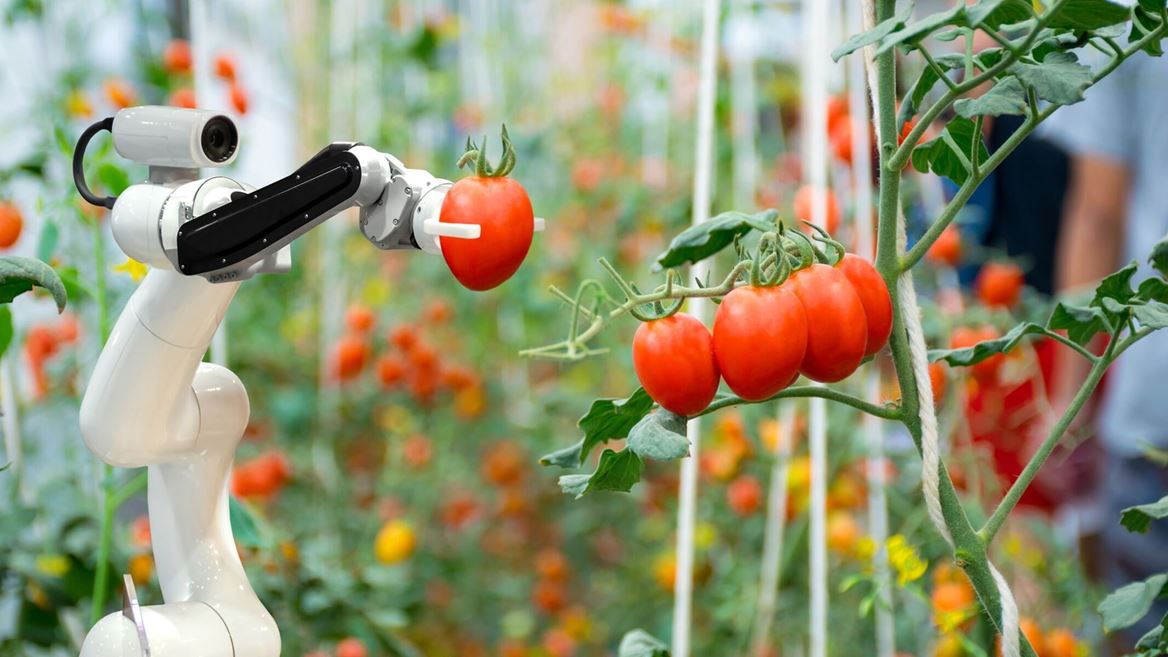Robotics and automation with high order intake but disrupted supply chains

- Sector forecasts growth of 6 percent in 2022
- Sales in 2021 stronger than expected
- Shortage of skilled workers
Munich, 21 June 2022 – The robotics and automation industry in Germany is benefiting from a boom in demand: in the first four months of 2022, order intake increased by 38 percent year-on-year. The dynamic market development had already been noticeable with the results for 2021, in which industry turnover rose by 13 percent – more than expected. “The robotics and automation industry is booming,” says Frank Konrad, Chairman of the VDMA Robotics + Automation Association. “However, suppliers will not be able to process the orders as quickly as usual. The challenge now is to manage bottlenecks in the supply chains.”
Forecast 2022: plus 6 percent
With a predicted growth of 6 percent, the industry forecast for robotics and automation is also positive for 2022 – but remains below previous expectations, reflecting the severely disrupted supply chains. In particular, a shortage of electrical and electronic components is extending delivery times.
Comparison of the three subsectors of robotics and automation
The three subsectors developed differently in 2021. Machine vision gained 16 percent: industry sales reached 3.1 billion euros. Robotics sales rose by 13 percent to 3.5 billion euros. Integrated assembly solutions recorded an 11 percent increase in sales to 7.1 billion euros. Overall, sales in robotics and automation rose by 13 percent to 13.6 billion euros – more than originally expected.
The overall robotics and automation forecast is plus 6 percent with an expected industry turnover of 14.4 billion euros.
Frank Konrad, Chairman of the VDMA Robotics + Automation Association
Forecast 2022 – subsectors & total
VDMA Robotics + Automation forecasts a 7 percent increase in sales for integrated assembly solutions to 7.6 billion euros in 2022. In robotics, growth of 5 percent to 3.6 billion euros is expected. Machine vision is also set to grow by 5 percent, corresponding to sales of 3.2 billion euros.
“The overall robotics and automation forecast is plus 6 percent with an expected industry turnover of 14.4 billion euros,” says Frank Konrad. “Robotics and automation in 2022 is thus almost headed for the strong pre-crisis level of 14.7 billion euros of 2019.”
Robotics and automation as enabler of innovation
The VDMA R+A member network consisting of 50,000 people in 350 companies has important tasks to solve that are crucial for the future:
Sustainable production: Experts believe that the increased use of robotics and automation is indispensable for achieving climate and environmental protection goals and for sustainable business. In a recent trend survey conducted by automatica (Messe München), robots ensure quality standards for products in sustainable high-tech manufacturing, according to 88 percent of industry decision-makers. Industry solutions are also helping the circular economy and renewable energies to achieve their breakthrough. Green tech products, such as photovoltaic modules, can be manufactured cost-effectively in Europe in large quantities using automation technology. The demand for fuel cells or particularly powerful batteries for electric cars is opening up new market opportunities.
The future of work: A good 80 percent of the experts who make decisions about robotics and automation in German industrial companies also believe that technological innovation will have a positive impact on jobs. Human-robot collaboration and the use of assistance systems will create higher-quality employment and offer new opportunities for continuous education and training. A new generation of automation technology that can be used entirely without programming and is intuitive to apply is likely to lead the way here. 52 percent of decision-makers are firmly convinced that better-qualified employees will get better-paid jobs in the future.
Digitalization, mobile robotics and intralogistics: Seamlessly interconnected machines, state-of-the-art AGVs (automated guided vehicles) and AMR (autonomous mobile robots) are revolutionizing factories. In combination with innovative software solutions, they close the last gaps and form truly integrated systems in the Smart Factory.
Skills shortage a big concern
Robotics and automation companies are facing a labor and skills shortage that is accelerating as the “baby boomer” generation retires from the job market. Given the important tasks ahead, this is increasingly becoming a risk factor. “The labor shortage cannot be solved by robotics and automation alone,” says Frank Konrad. “Companies are doing their best to address the shortage of young talent. However, we need a stronger commitment from policymakers: Particularly in Germany, the shortage of personnel threatens to become the next major bottleneck factor, following the current disruptions in supply chains.”
automatica 2022
After a break of four years, automatica in Munich – The Leading Exhibition for Smart Automation and Robotics – is back as in-person event with a strong exhibitor base. With its undisputed theme leadership and its complete range of offerings, it will provide further impetus for the industry.
The VDMA is Europe’s most important mechanical engineering industry associaton and represents more than 3,400 German and European companies. The industry stands for innovation, export orientation and medium-sized businesses. The companies employ around four million people in Europe, more than one million of them in Germany alone. Mechanical and plant engineering represents a European turnover volume of around 800 billion euros. In the entire manufacturing sector, it contributes the highest share to the European gross domestic product with a value added of around 270 billion euros.





